#mai fukuyama
Explore tagged Tumblr posts
Text










2024.12.15 千葉 アイマスEXPO 展示物いろいろ
1~6枚目 主に参加した有志旗
#アイドルマスター#アイマスEXPO#アイドルマスターシンデレラガールズ#アイドルマスターミリオンライブ#アイドルマスターヴイアライブ#学園アイドルマスター#望月杏奈#月下氷姫#藤原肇#鷺沢文香#萩原雪歩#福山舞#若林智香#水木聖來#桜守歌織#高森藍子#the idolm@ster#im@s expo#the idolm@ster cinderella girls#the idolm@ster million live#anna mochizuki#hajime fujiwara#fumika sagisawa#yukiho hagiwara#mai fukuyama#tomoka wakabayashi#seira mizuki#kaori sakuramori#aiko takamori
4 notes
·
View notes
Text

SELECT SHOP UPDATE
Time to enjoy a tea party in the woods, alongside the ever cute Mister Bear♪
The next set of outfits to be purchased is MILKTEA PARTY’s Outing With Mister Bear♪ One Piece outfit made to be promoted by Mai Fukuyama. Along with the featured idol, a handful of other idols are able to wear this outfit.
3 notes
·
View notes
Text
yuh

#idolmaster#idolmaster cinderella girls#imas#mary cochran#akagi miria#mai fukuyama#nina ichihara#koharu koga#koseki reina#kusakabe wakaba#matoba risa#hikaru banjos#narumiya yume#ohnuma kurumi#yukumi sajón#sakurai momoka#sasaki chie#tachibana arisu#yanase miyuki#yokoyama chika#。◕`ヮ´◕。#ryuzaki kaoru
2 notes
·
View notes
Text
DAY 49

Today's character is Mai Fukuyama! Mai is quite young but pretty mature and responsible, as well as friendly. She used to be a child actress and became an idol from her mother's encouragement.
FUN FACT: Some fans might think that Mai is based on actress/singer/model Haruka Fukuhara
this drawing came out cute i think. i realize that i accidentally turned her shirt into a sweater-cardigan type thing by accident though lol
bye!
bonus images










#mai fukuyama#cinderella girls#シンデレラガールズ#idolm@ster#idolm@ster cinderella girls#アイドルマスターシンデレラガールズ#福山舞
3 notes
·
View notes
Text



more imas redraws! i started off with new gen but afterwards i've been going in the order they appear in the producer notes in-game :)
#idolmaster#idolm@ster cinderella girls#idolmaster cinderella girls#idolmaster fanart#cinderella girls#im@s#imas#mai fukuyama#fukuyama mai#yukari mizumoto#mizumoto yukari#nakano yuka#yuka nakano
18 notes
·
View notes
Text
Happy Birthday, Mai Fukuyama, Kumiko Matsuyama, and Takane Shijou! (Cinderella Girls)



1 note
·
View note
Text

SP@WNFOXY
101 notes
·
View notes
Text

#tv shows#tv series#polls#assassination classroom#jun fukuyama#mai fuchigami#nobuhiko okamoto#2010s series#japanese series#have you seen this series poll
79 notes
·
View notes
Text
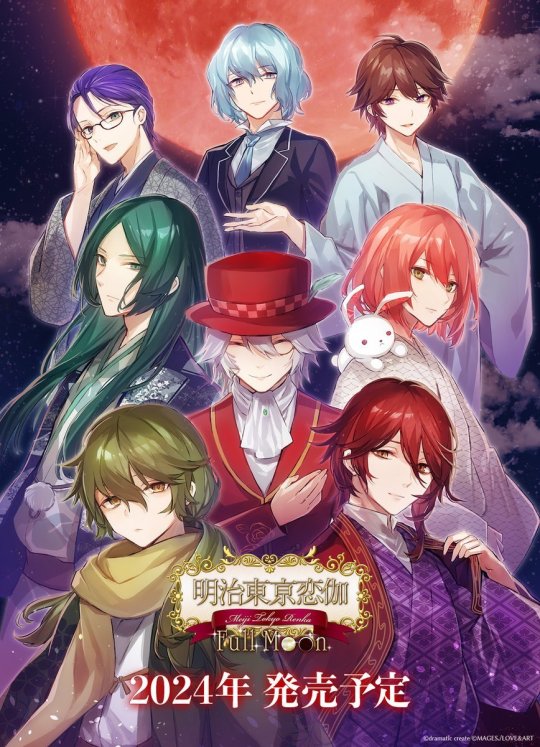
Meiji Tokyo Renka: Full Moon will be out on Switch and Steam 10/3/2024!!
#may 2023#otome#english otome#seiyuu#morikawa toshiyuki#fukuyama jun#meiji tokyo renka#kenn#hosoya yoshimasa#okamoto nobuhiko#toriumi kousuke#tachibana shinnosuke#namikawa daisuke#cant wait#i need to rewatch the anime#meiji tokyo renka full moon
23 notes
·
View notes
Text



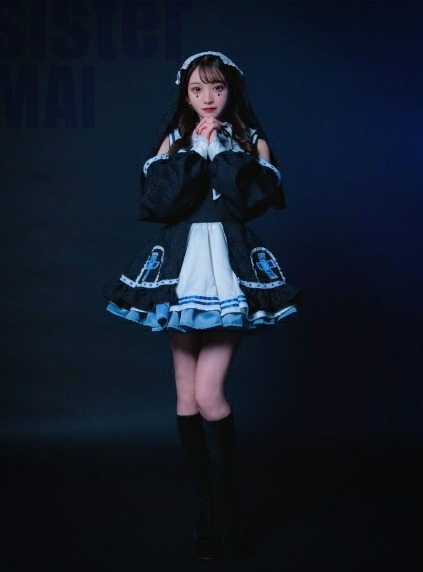

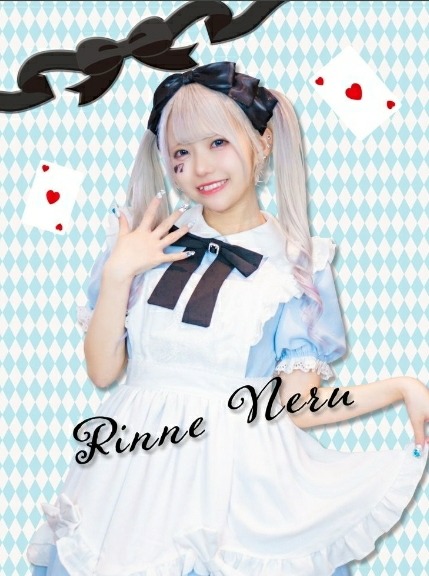


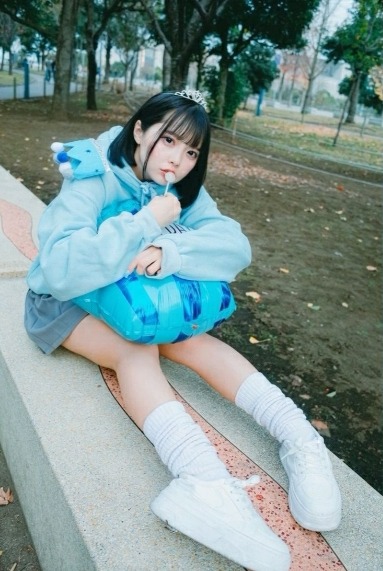

everything is blue . . .
Seren Hoshimi (misolade-edison)
Moa Kikuchi / Moametal (BABYMETAL)
Mai Hanase (iLiFE!)
Nano Suzume (iLiFE!)
Rinne Neru (NANIMONO)
Touma Mifuyu (NANIMONO)
Mizuki Kirihara (CANDY TUNE)
Rino Fukuyama (CANDY TUNE)
#blue#moodboard#misolade edison#seren hoshimi#babymetal#moametal#moa kikuchi#dancing princess :: moa ☆#ilife!#ilife#mai hanase#nano suzume#nanimono#rinne neru#touma mifuyu#candy tune#mizuki kirihara#rino fukuyama#<333#blueberri babs...
21 notes
·
View notes
Text










2024.9.14 神奈川 横浜 みなとみらい Kアリーナ
ライブに合わせて有志の方によるドールの集合
ライブのフラワースタンド
#アイドルマスターシンデレラガールズ#高森藍子#栗原ネネ#渋谷凛#櫻井桃華#赤城みりあ#依田芳乃#久川凪#棟方愛海#喜多日菜子#白菊ほたる#鷹富士茄子#島村卯月#福山舞#横山千佳#金子有希#the idolm@ster cinderella girls#aiko takamori#nene kurihara#rin shibuya#momoka sakurai#miria akagi#yoshino yorita#nagi hisakawa#atsumi munakata#hinako kita#hotaru shiragiku#kako takafuji#uzuki shimamura#mai fukuyama
5 notes
·
View notes
Text

2 DAYS LEFT to Starlight Stage’s 8th Anniversary
featuring U149 (Kozue Yusa, Yukimi Sajo, Mai Fukuyama, Chika Yokoyama) by Cygames Pictures Staff
#deresute campaign#anniversary campaign#kozue yusa#yusa kozue#yukimi sajo#sajo yukimi#mai fukuyama#fukuyama mai#chika yokoyama#yokoyama chika
17 notes
·
View notes
Text
Karamatsu and...Black Jack?
ok, so i value integrity and i keep my promises. i made a post a few days ago saying that i would read black jack because of this official art

basically, i was curious why they chose black jack for karamatsu. i was vaguely familiar with the other characters, but i had never read black jack.
osomatsu is the franchise's poster child, so of course he would be atom, who is also osamu tezuka's most famous character.
i'm not familiar with phoenix, but honestly the story seems very compelling and in all transparency, i have no idea how it connects to choromatsu
Ichimatsu as hyakkimaru is somewhat fitting, as hyakkimaru has a very hardened disposition after living without most of his body parts. he also has a similar dynamic with jyushimatsu that hyakkimaru has with dororo.
jyushimatsu as leo and todomatsu as sapphire kind of fit with their respective gimmicks (jysuhimatsu as the animal character and todomatsu as the only female/feminine character, though i've never read either manga so there's probably more meaning to this)
but my favorite character is karamatsu, so i wanted to look into why specifically black jack was chosen for him.

I read around 6 volumes of Black Jack and let me say, it's peak. I honestly thought it would feel outdated and/or simple in it's narrative structure, but every chapter is so compelling. osamu tezuka was a licensed physician (though he didn't practice), so he's able to fully explore some really interesting takes on life and death and where medicine fits between them.
so, i read on, trying to figure out why they chose black jack for karamatsu. was it for the pun on his name (karack jack)? was it because they were running out of characters? was it just because of the eyebrows?


Maybe it's all of those things, but there's something that won't leave my head. over time I continuously thought the same thing after reading every chapter: Black Jack... is COOL
he's so cool, he just is. Black Jack is a genius unlicensed doctor who charges exorbitant fees for his procedures. most of the time, his patients come to him as a last ditch effort and he's able to swoop in and save the day. He has this really aloof attitude outwardly, but in private he shows his immense care and consideration for his patients. feeling devastated when he fails to save one.
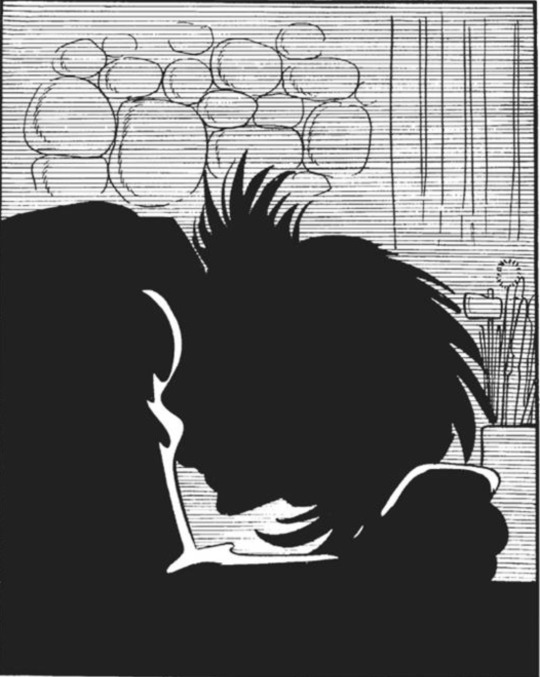
he also just tends to hide his more tender emotions in general, only really expressing them in his internal monologue or when he's alone.

does that remind you of anyone? anyone at all?
ok so you may think it's a stretch, which I get. but hear me out! sometimes SOMETIMES... karamatsu is also cool. i'm honestly not gonna go through all his cool moments... because i talk about it in every other post i make (punching oso is definitely one of his best moments) but according to this post, even in season 1 when he was at his least cool, Fukuyama Jun agrees with me!
"Fukuyama Jun (Ichimatsu’s VA) said that Karamatsu is a ‘cheat character’ because despite being a supposedly-painful character, he shows his cool/mature personality as a big brother way too often, especially in ep 24."
my thing is, beyond being cool, i still feel like black jack and karamatsu are kind of similar. honestly, in my mind, black jack sort of feels like an older, more jaded karamatsu.
because we actually kind of see him become more burnt out and jaded as time goes on. like, this is what he looks like during his daily life in the takoyaki party movie

now ofc, this montage is kinda showing that the bros are bored with their daily existences... but they don't all look like this. most of them mainly look lethargic. if anything, karamatsu looks a bit apathetic.
and ofc we can't forget what he looks like in the latest official art

(though, this is more for comedic effect than anything lol)
and don't worry, ofc karamatsu still has his karamatsuisms in the movie, but they're definitely not as exaggerated as they once were.
now all of this is to say that i believe as time goes on, karamatsu is becoming more and more... stoic? dulled? i mean, season 1 kara is almost a completely different character than current kara. @brofightiscancelled made a really good point and speculated that in s4, they're really gonna lean into the exclusivematsu bit with him. i very much agree, especially because karamatsu's butt monkey status has been greatly reduced (though he's still the main target for any totty dryness or residual ichimatsu aggression).
(btw, i think the others are also much more dull, but karamatsu, todomatsu, and osomatsu feel more drained vs. jyushimatsu and ichimatsu feel more so mellowed out. choro is actually the only one who became more intense. i also believe that karamatsu's progression is a bit more distinct, simply because he basically lost his defining gimmick from s1, while the others still have some of their gimmicks from s1.)
But another trait that I feel black jack and karamatsu share is how dedicated to their world view they are. or i guess how unyielding they are? and thats actually not always a good thing for either character. black jack always does things the way he wants to, even if it lands him in jail. he refuses to get a medical license because it would force him to practice medicine by the books. and he's extremely stubborn in his fees, he's convinced that any amount of money is worth saving a life. he'll charge people who clearly don't have the funds large sums of money, no matter what.

karamatsu is the same, but uh, the things he's stubborn about are way dumber
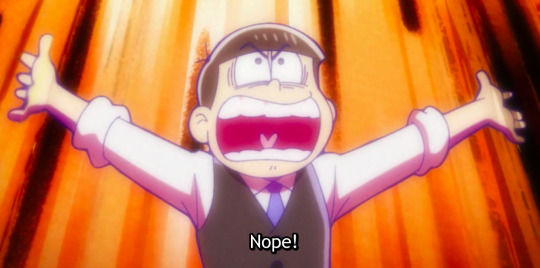
they also are both extremely dedicated to their appearance, even if others disapprove.


(btw black jack is constantly mocked for the brown patch of skin on his face and told to remove it. but he refuses to because his childhood friend, who is biracial, donated it to him)
in conclusion, the staff were cooking when they gave black jack to karamatsu. i think they were aware of their subtle similarities, but also they were aware that karamatsu is seen as cool and wanted to give the coolest character to him. this was just a very long post to express that.
also, here's an akatsuka reference i found in black jack
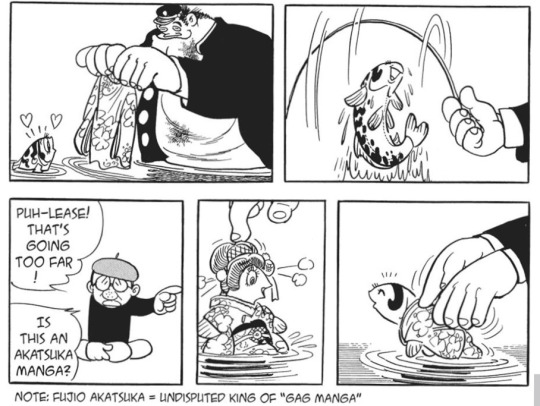
#ososan#osmt#osomatsu san#おそ松さん#karamatsu#choromatsu#todomatsu#ichimatsu#jyushimatsu#Black jack#osamu tezuka
40 notes
·
View notes
Text
Chapter 169: Find the Culprit!

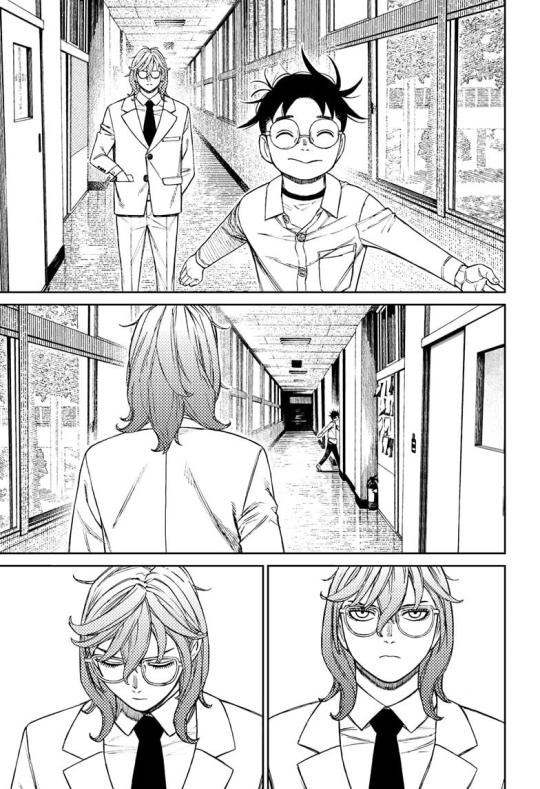
Sanjome was talking a lot this chapter about vibrations and frequencies, it's probably important and may become obvious later, but I have no idea what you're talking about bro. I like Okarun's little frog face as he walks away he's so cute. I think Sanjome might have been trying to steal Okarun's power here, since he made him yield, and had the blade ready, but maybe he realizes he doesn't have powers anymore and stopped?
Also Jiji sings this song in the chapter. It's "Hello" by Fukuyama Masaharu from 1995, it has this American surfer rock'n'roll vibe, very interesting.
#dandadan#dandadan spoilers#dandadan chapter 169#sanjome#count saint germain#okarun#the character interactions are so silly#theyre so precious
44 notes
·
View notes
Text

THE THRILLING AND NOT AT ALL REPETITIVE ADVENTURES OF CAPTAIN MAN AND KID DANGER: “A CHRONOLOGY OF ENTIRELY TRUE AND HEROIC EVENTS COINCIDING WITH THE END OF HISTORY” [1] [2] [3] [4]
Henry Hart returns from Dystopia. He grew up and his hair grew back out, but it’ll take more time to get refamiliarized with the mundane.

[ Henry’s figure is ominously silhouetted, staring at Ray with the whites of his eyes and a glare of light where his heart should be. Ray smiles invitingly, and stands with his hands on his waist, wearing only a towel. A laundry basket sits next to him. Posters are mounted on the wall to his back, including Captain Man merchandise, motivational material, and a reference to The End of History and the Last Man. ]
Following the resolution of the Cold War, Francis Fukuyama argued in his 1992 political novel The End of History and the Last Man that global democratization and the expansion of Western, liberal values would bring about a post-war, post-development society. Democratization was the process in which civilization reached its final form; it would mark not only the end of communism, but the end of history. No more glorious revolution. No more hunger. The world could remain where it was. Fukuyama was, of course, wrong.
To be a hero is to know: there will be no end of history. You may hope for one, but you act as if it will never come, because it won’t. Otherwise, what is the point? There will be crime, and war, and hurt children. No amount of blood or money can save us for-ever. Your symbols cannot finish what has been started, but they can keep you alive until then; when you fight for long enough, it is hard to return to the repetitive things:
To living with people again.
To walking in the daylight without flinching, and, most importantly—
To laundry.
#henry danger#henry hart#ray manchester#henray#dangerverse#my art#pov: you’re back from the most dangerous place you’ve ever been which is basically overseas chicago and now you have ptsd and are#now disconnected from the mundane and domestic aspects of your former life. and your former idol mentor partner aspiration hero ruiner of#of your life is your roommate#which is fine! it is fine#Jasper and Charlotte and Piper are also included but just not in these panels. they exist somewhere. maybe I’ll end up finishing them#also pov: if they gave me a contract and said ok now do smt. this is what it would look like in a feverish haste#also I think I have a problem like this is such an obscure hyperfixation I’ve developed and now I’m insane
120 notes
·
View notes

